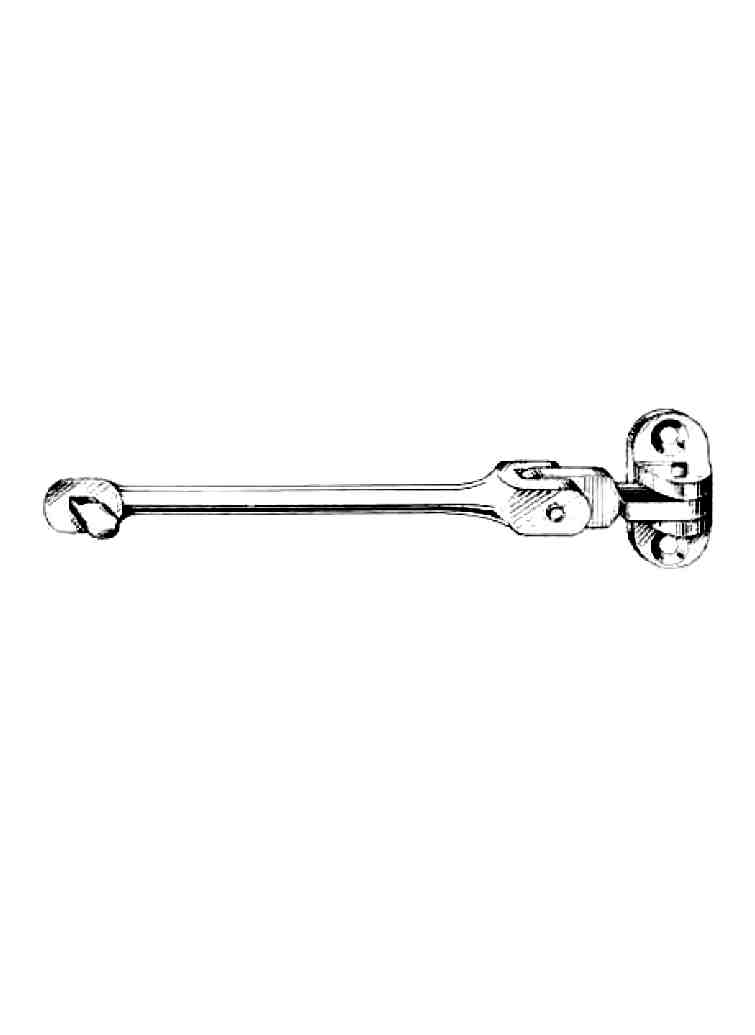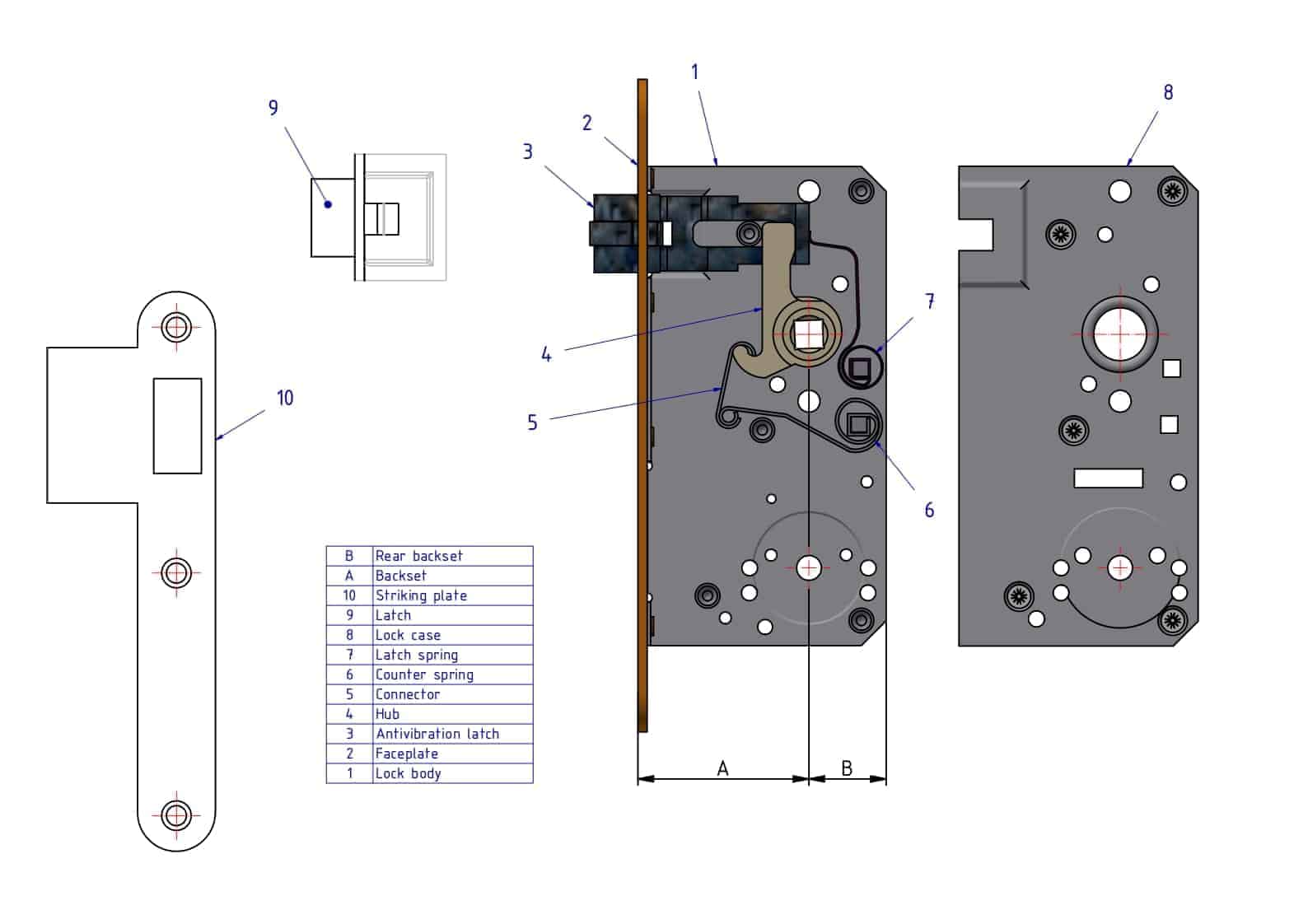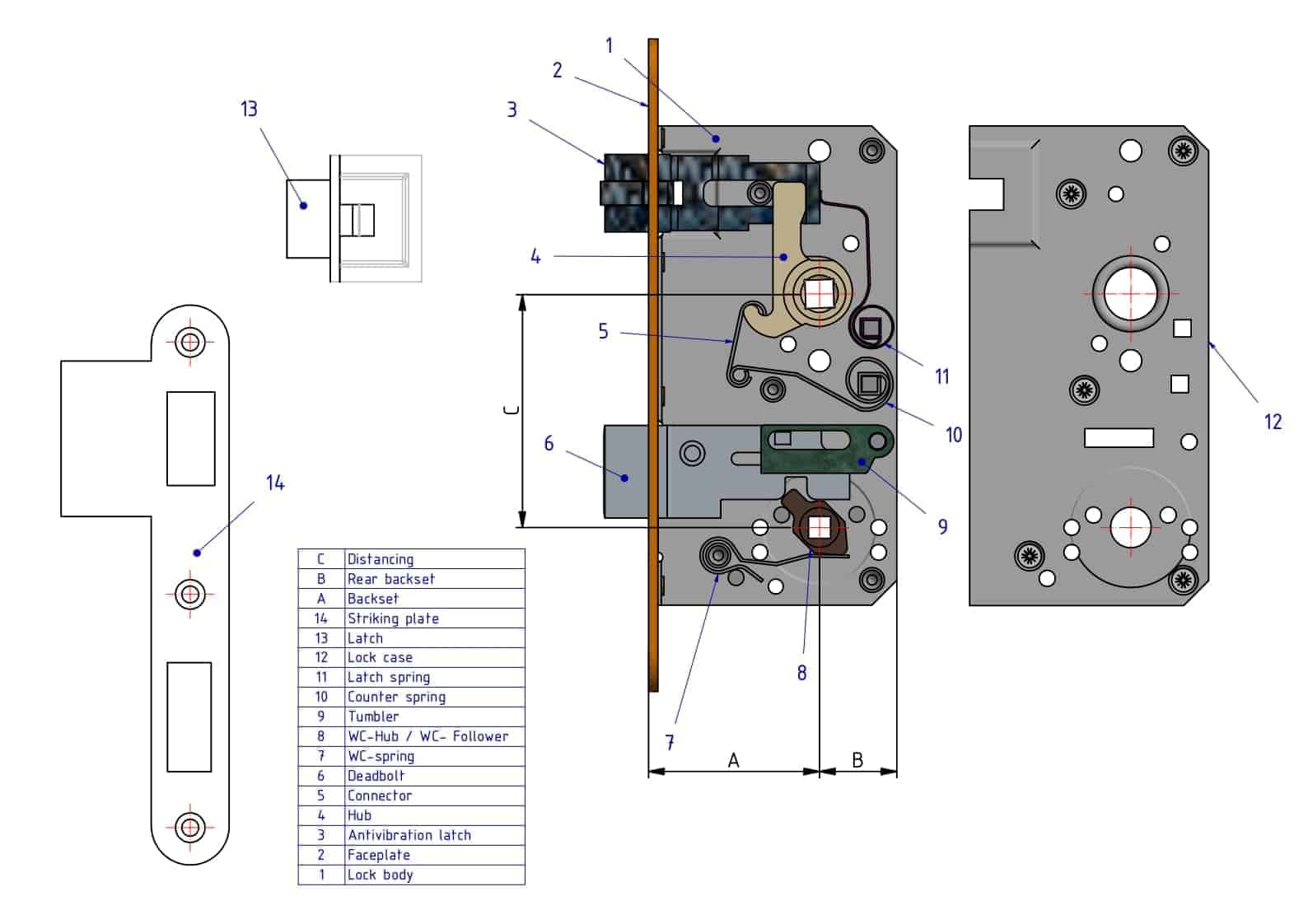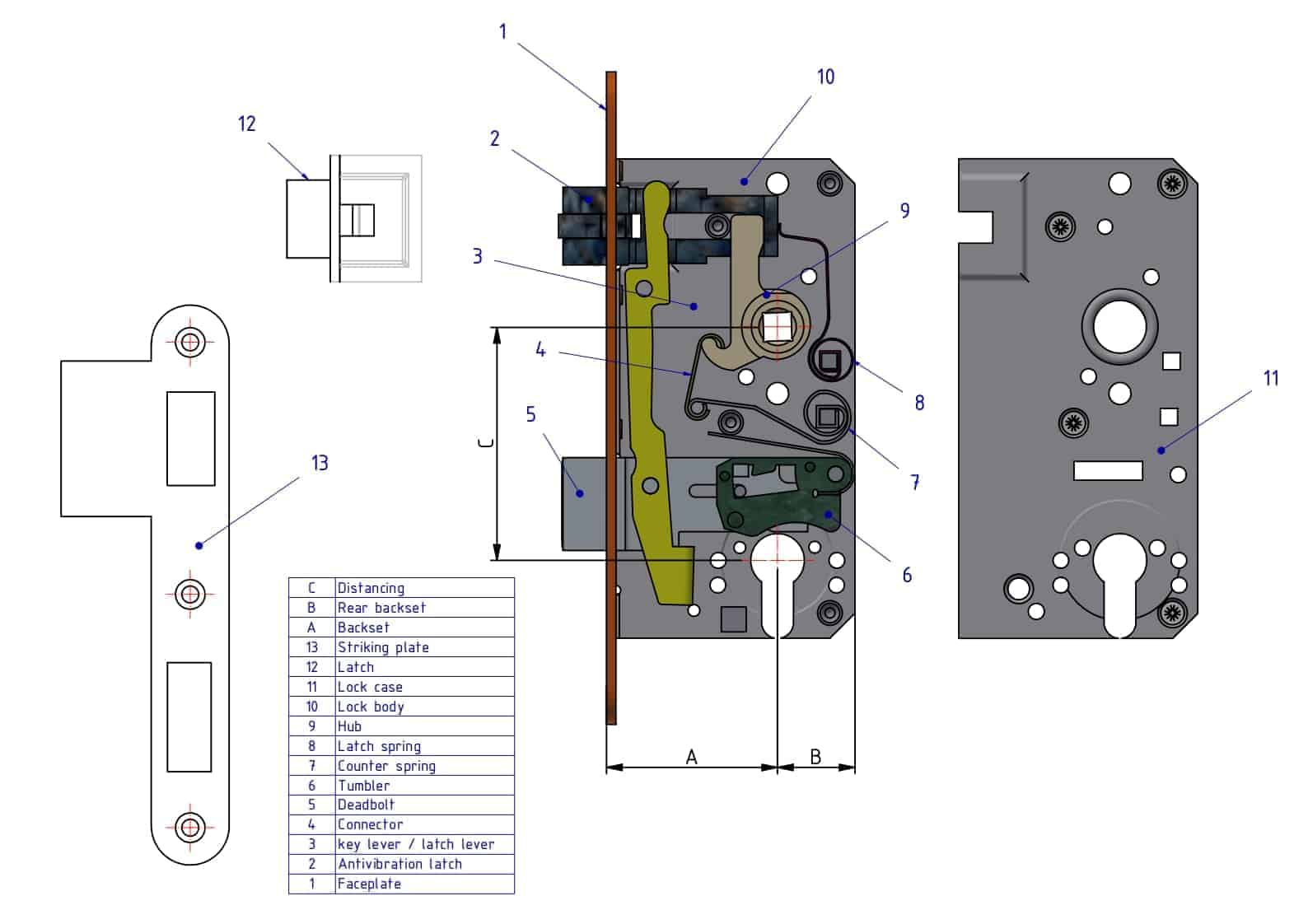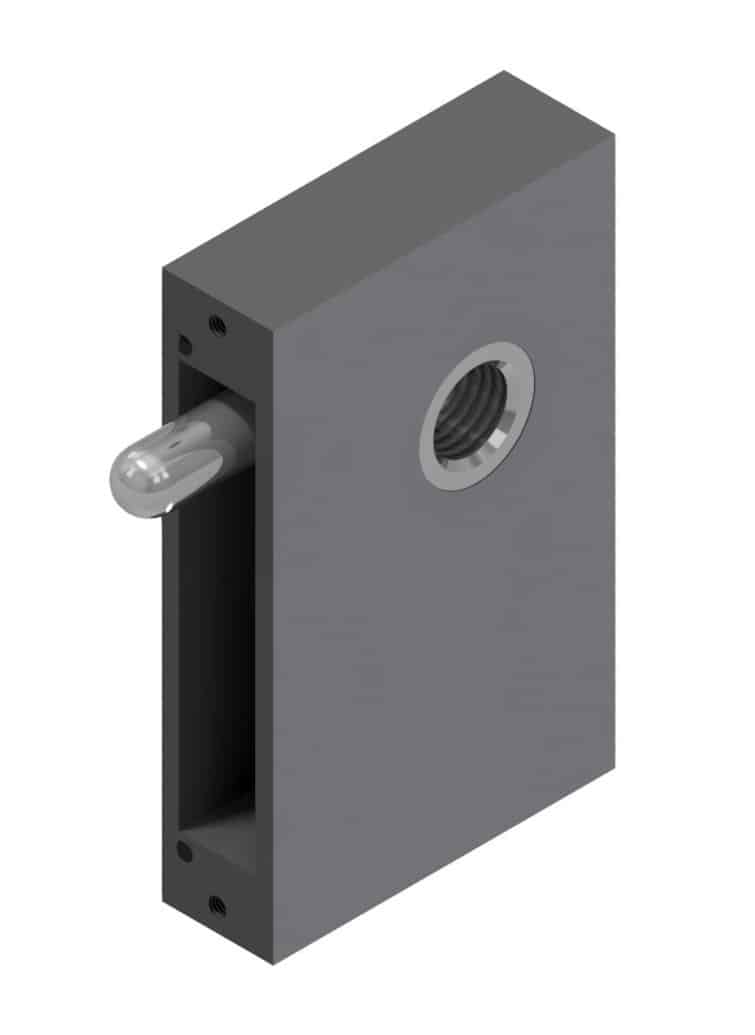
Dogs for yacht doors | GSV-No. 9046
29. November 2022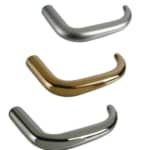
Handles / levers full material for mortises / rim locks Brass | GSV-No. 3310
2. Dezember 2022Ajar hook with holding brass for locks with hole for ajar hook in faceplate | GSV-No. 3575 G
SKU: 3575 G
Standard productAjar hook with holding brass for locks with hole for ajar hook in faceplate | GSV-No. 3575 G
The locking bolt with locking mechanism, GSV No. 3575 G, made of high-quality brass, is a specialized security component designed for use in locks with locking bolt locks in the stile. This locking bolt serves as an additional security measure and is designed to ensure reliable and stable locking of the locking mechanism. Made from brass, a material known for its excellent corrosion resistance, durability, and resistance to wear, the locking bolt offers a long-lasting and effective solution.
The locking mechanism ensures that the bolt remains in its position, providing enhanced security and reducing the risk of unauthorized tampering or accidental unlocking of the lock. This feature makes the locking bolt a reliable choice for security solutions where additional locking is required.
The brass material not only provides high mechanical strength but also contributes to an attractive appearance, which complements many door and lock designs. The locking bolt is suitable for use in various doors, gates, and other applications where a locking bolt lock in the stile is integrated.
With its robust construction and reliable locking mechanism, the locking bolt is an effective and durable solution to improve the security and functionality of door locks and locks in general.
| Product class | |
|---|---|
| HS-Code |
The hand of door for mortise locks is defined as:
if the door is closed and the hinges are visible on the right/left, then the door is right/left hand. The door is therefore hinged on the right/left and according by definition of DIN right/left.
Or: if you grasp the handle with your right hand and latch and deadbolt show to the left, then it is right hand. If you grasp the handle with your left hand latch and deadbolt show to the right, it is a left hand.

Rim locks
The hand of door for rim locks is defined as:
if the door is closed and the hinges are visible on the right/left, then the door is right /left hand. The door is therefore hinged on the right/left and according to the definition DIN “right/left".
In addition to the designation “left” and “right”, it is to be indicated whether the locks are intended for inward or outward opening doors.

Sliding door mortises
The hand of door for sliding door mortises is the same for right and left. Sliding rim door locks different for left and right doors.
When ordering, always indicate “left” or “right”.

| Latch
The lock latch keeps the door shut. In order to open the door, it must be retracted. |
| Type of latch design | Illustration |
| single latch | 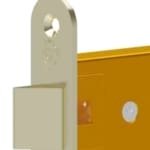 |
| anti-vibration or three-piece latch | 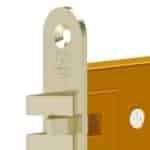 |
| rolling latch adjustable | 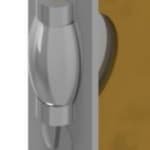 |
| POM-latch for strike dampening | 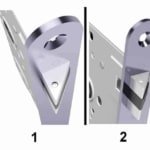 |
| Deadbolt
The deadbolt regulates the access rights through the turning motion of the cylinder by key. The deadbolt is being driven out or retracted through the turning motion. |
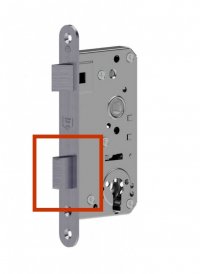 |
| Faceplate
The faceplate is the visible part of the lock case. The faceplate, the latch and the deadbolt are the only visible parts of a mortise. |
 |
Handle hub
The handle hub takes the square spindle of the handle in order to retract the latch inside the lock through the turning motion of the same. This process allows the opening of the door. The shipbuilding norm specifies a 9mm square with a 2° incline. Schwepper supplies also with 8mm square, special contour or 0° incline on request. |
 |
WC-/privacy hub
The WC hub takes the square spindle of the olive or thumb turn, that retracts or drives out the deadbolt from the inside - analogue to the turning motion of the cylinder. The shipbuilding norm specifies a 7mm square. Schwepper supplies also with 8mm square on request. |
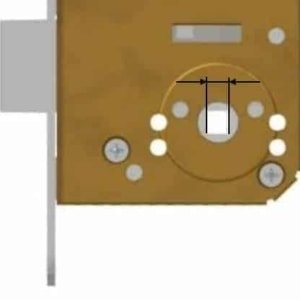 |
| Dimension | Illustration | |
| Backset
The backset is the distance from the front edge of the faceplate to the center of the cylinder hole respectively handle hub square. The rear backset behind the center line remains always 27mm. |
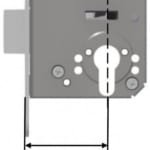 |
|
| Distancing
The distancing is the dimension from the center of the handel hub and the center of the hole for profile cylinder / privacy (WC) / key. The industry standard in shipbuilding is 75mm. |
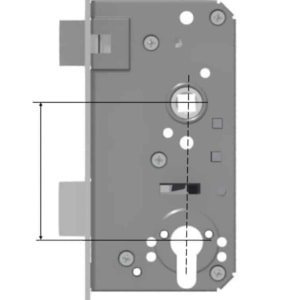 |
|
| Latch protrusion
The latch protrudes according to the industrial DIN standard in shibuilding 14mm. Other technical standards for latch protrusion are: 16 mm according to DOT (Department of Transportation) 19 mm according to USCG (US Coast Guard) |
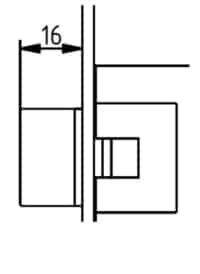 |
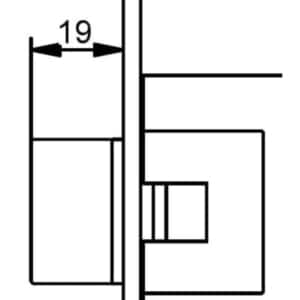 |

